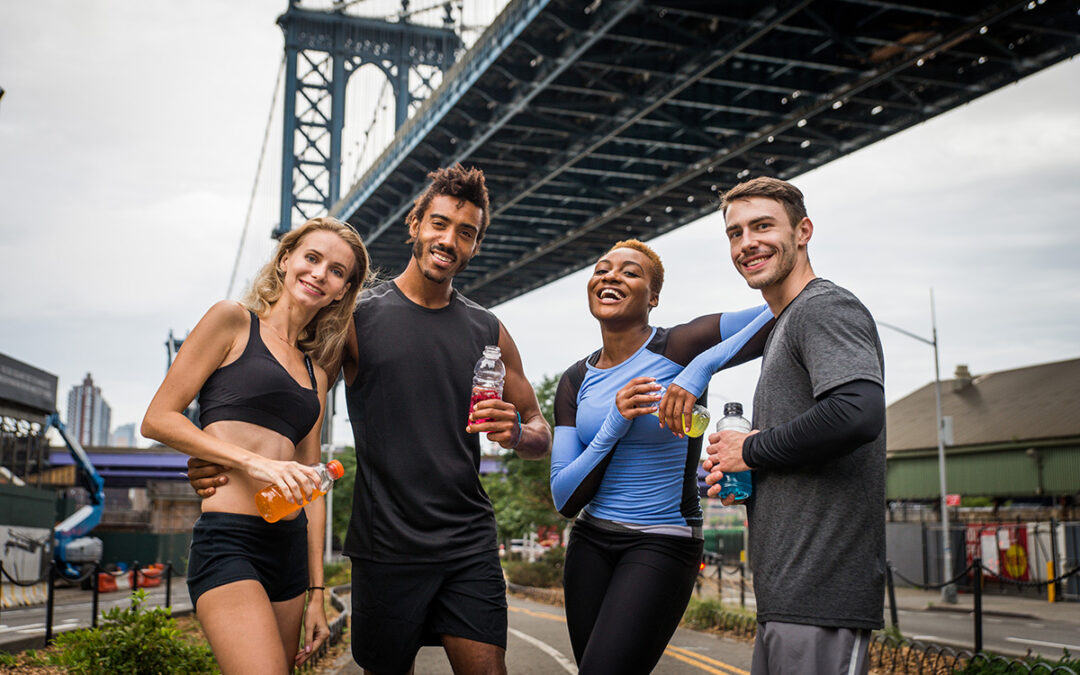There’s a special energy that fills New York City each spring when runners from around the world gather to take on the United Airlines NYC Half Marathon. As one of the world’s most iconic urban races, it offers a unique 21.1-kilometre tour through the city’s most vibrant neighbourhoods and landmarks. Having experienced both the challenges and triumphs of this race firsthand, I’m excited to share everything you need to know about conquering the 2026 edition.
Why Run the NYC Half Marathon?
The NYC Half Marathon stands out among urban races for its perfect blend of world-class organization, iconic scenery, and that unmistakable New York energy. Here’s what makes this race worth the journey.
1. An Unforgettable Urban Tour
The point-to-point course takes runners on a journey through New York’s most famous landscapes:
- The scenic start in Brooklyn’s Prospect Park surrounded by historic brownstones
- The breathtaking climb up Manhattan Bridge with panoramic skyline views
- The unforgettable experience of running through a vehicle-free Times Square
- The triumphant finish in Central Park amid cheering crowds
2. World-Class Organization
New York Road Runners brings decades of experience to this event, ensuring every detail is carefully managed:
- Efficient wave starts that minimize crowding
- Well-stocked hydration stations every mile
- Clear course marking and abundant volunteer support
- Seamless baggage transport from start to finish
Course Strategy: What to Expect
While the NYC Half features some challenging elevation changes, proper preparation can help you manage the course effectively.
Start Through Prospect Park (Miles 1-3)
The race begins with a loop through Prospect Park featuring rolling hills. The opening kilometre is mostly downhill, but don’t be tempted to start too fast—the first significant hill arrives around the 2K mark. Use this section to find your rhythm and conserve energy for the bridges ahead.
Manhattan Bridge to FDR Drive (Miles 4-8)
The approach to Manhattan Bridge begins a steady, challenging climb. The bridge itself offers spectacular views but requires careful pacing. The descent into Manhattan leads to the relatively flat FDR Drive, where you can recover and find your rhythm before reaching Times Square.
Times Square to Finish (Miles 9-13.1)
The excitement of running through Times Square provides a natural energy boost, but be prepared for the rolling hills of Central Park in the final miles. The course finishes with a gentle downhill on Central Park’s West Drive, where crowds gather to cheer runners to the finish.
Training for Success
Specific preparation will help you handle the NYC Half’s unique challenges effectively.
Bridge Training
Incorporate sustained hill repeats into your training to prepare for the Manhattan Bridge climb. Focus on maintaining effort rather than pace on inclines, and practice controlled downhill running to preserve your quadriceps.
Urban Running Practice
If possible, train on surfaces similar to the race course, including asphalt, concrete, and occasional metal grating. The varied urban surfaces can cause unexpected fatigue if you’re not prepared.
Securing Your 2026 Entry
With high demand for this popular race, understanding the entry process is crucial.
Registration Options
- Drawing: The general entry drawing typically opens in late 2025
- NYRR Membership: Members receive preferred entry opportunities
- Charity: Official charity partners offer guaranteed entries
- Time Qualification: Competitive times from recent races may provide guaranteed entry
Race Weekend Preparation
Expo and Bib Pickup
The race expo at Jacob K. Javits Center is worth visiting for the energy and exhibits. Arrive early to avoid crowds and ensure you have time to explore the vendor offerings while staying off your feet.
Race Morning Logistics
With the start in Brooklyn and finish in Manhattan, planning your transportation is essential. Official shuttle buses from Manhattan provide the most reliable option, though many runners prefer staying in Brooklyn near the start area.
Weather Considerations
March weather in New York can be unpredictable. Recent races have experienced everything from freezing temperatures to unseasonable warmth. Pack layers and be prepared for changing conditions.
Making the Most of Your NYC Experience
Beyond the race itself, New York offers countless opportunities to create lasting memories. Consider arriving a few days early to explore the city without excessive walking, and plan your post-race celebration at one of New York’s famous restaurants or attractions.
Final Thoughts
The NYC Half Marathon delivers an exceptional urban running experience that balances challenge with incredible reward. The combination of iconic scenery, enthusiastic crowd support, and flawless organization creates memories that last long after you cross the finish line. With proper preparation and realistic expectations, your 2026 NYC Half Marathon can be an achievement you’ll cherish for years to come.
Start planning now—whether you’re seeking a personal best or simply want to experience one of the world’s great urban races, the NYC Half Marathon deserves a spot on your running calendar.

